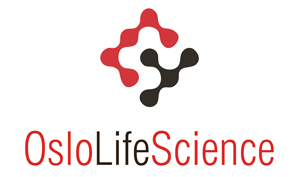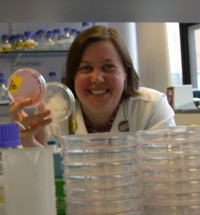Previous events - Page 214
This thursday, at the Speciation Journal Club, we will discuss a paper on reproductive isolation and speciation rate variation in nature, by Rabosky 2016 (BJLS)
– Program 16th February 2017
This is the main conference day with perspectives from academia, businesses and politics. There is a reception in the Oslo City Hall in the evening.
– Program 15th February 2017 – Partnership4Life
This day is meant for businesses that want to partner up with academia and vice versa.
Liz Sockett, Professor of Bacterial Genetics, School of Life Sciences, University of Nottingham, UK
Welcome to the annual Darwin Day celebration at the university of Oslo! This open event is for everybody interested in science and history. All are welcome! Speakers: Douglas J. Futuyma, Emma Goldberg, Andrew Hendry, and Yngvild Vindenes.
Hippocampal ROS and mitochondria in exercise: an electron microscopy analysis in a rat model of aerobic fitness
Welcome to GeoHyd Lunch Seminar Wednesday Feb. 10th @ 12:15 in Aud 2 in the Geology building.
Perineuronal nets in the entorhinal cortex and their role for the hippocampal place code
Velkommen til filmvisning av Steven Spielberg's klassiker Jurassic Park fra 1993. Få også med deg foredrag om vitenskapen og artene fra filmen i tillegg til dinosaurenes rolle i filmhistorien.
Elizabeth Gillaspy, p.t. Münster (Germany) will give a talk with title "Wavelets and spectral triples for higher-rank graphs"
There is increasing support for body size as an important factor determining population dynamics in both animal and plant species. Integral Projection Models (IPMs) make it possible to assess the interplay of body size and population dynamics, but does body size always matter?
by
Carolina Lithgow-Bertelloni
From UCL, London
This thursday, at the Speciation Journal Club, we will discuss a paper on Mega-evolutionary dynamics of the adaptive radiation of birds, by Cooney et al. 2017 (Nature)
Welcome to GeoHyd Lunch Seminar Wednesday Feb. 8th @ 12:15 in Aud 2 in the Geology building.
Erik Bølviken (University of Oslo) gives a lecture with the title: Where models meet reality - The Solvency II regulation of European insurance
Welcome to GeoHyd Lunch Seminar Friday Feb. 3rd @ 12:15 in Aud 2 in the Geology building.
Kimmo Kainulainen, University of Jyvaskyla
This Friday, the 3rd of February, we will discuss a paper by Davis et al. from 2016 titled "Herbivory promotes dental disparification and macroevolutionary dynamics in grunters (Teleostei: Terapontidae), a freshwater adaptive radiation".
Hope to see you there!
by
Nicholas Schmerr
From University of Maryland
This thursday, at the Speciation Journal Club, we will discuss a paper entitled "Multispecies coalescent delimits structure, not species" by Sukumaran and Knowles from PNAS (2017)
The Barratt nerve BSd X of the Kan subdivision Sd X of a simplicial set X \in sSet is a triangulation. The Barratt nerve is defined as taking the poset of non-degenerate simplices, thinking of it as a small category and then finally taking the nerve.Waldhausen, Jahren and Rognes (Piecewise linear manifolds and categories of simple maps) named this construction 'the improvement functor' because of the homotopical properties and because its target is non-singular simplicial sets. A simplicial set is said to be 'non-singular' if its non-degenerate simplices are embedded. There is a least drastic way of making a simplicial set non-singular called 'desingularization', which is a functor D:sSet -> nsSet that is left adjoint to the inclusion. The functor DSd^2 is the left Quillen functor of a Quillen equivalence where the model structure on sSet is the standard one where the weak equivalences are those that induce weak homotopy equivalences and the fibrations are the Kan fibrations. I will talk about the main steps of the proof that the natural map DSd X -> BX is an isomorphism for regular X. This implies that DSd^2 is a triangulation and that the improvement functor is less ad hoc than it may seem. Furthermore, I will explain how the result provides evidence that any cofibrant non-singular simplicial set is the nerve of some poset.
Jens Chluba, University of Manchester
Since the measurements with COBE/FIRAS in the mid-90's we know that the CMB spectrum is extremely close to a perfect blackbody. There are, however, a number of processes in the early Universe that should create spectral distortions at a level within reach of present day technology. I will give an overview of recent theoretical and experimental developments, explaining why future measurements of the CMB spectrum will open up an unexplored new window to early-universe and particle physics, with possible non-standard surprises and several guaranteed signals awaiting us. I will highlight the complementarity of the distortion signals and the CMB anisotropies, illustrating how future distortions measurements could shed new light on different inflation models.
(The slides will be available here)
Inge S. Helland (Professor emeritus at Department of Mathematics,UiO) will give a seminar in the lunch area, 8th floor Niels Henrik Abels hus at 14:15.



